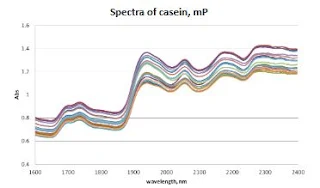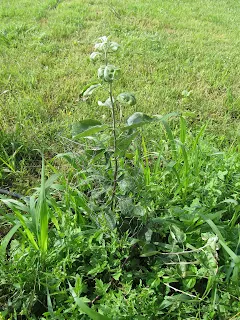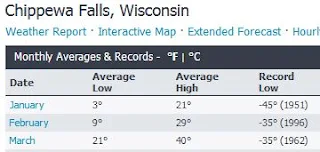We don't have them!
I cannot recall in my decades of walking around in the fields and woods of south-central Michigan of ever coming home with a tick. Not one.
We pull about three ticks a year off the dog's ears.
I know this is "news" along the lines of the headline "Angry man does
not shoot antagonist". How can
not having something be considered news?
It is news because it provides a "contrast" for areas that are over-run with ticks.
Their nearly complete absence is not an anomaly. Nature abhors a vacuum. Ticks have tremendous reproductive potential and they ride around on highly mobile animals. They would flood in if there were not agent(s) keeping them out.
Generalists as control agents
This article is typical of the balderdash being accepted as Gospel:
Ticks have numerous natural enemies...Most predators of ticks are generalists,
with a limited potential for tick management
You can pull up virtually any article on the biological control of ticks and some version of this statement will be embedded within that article. It is what the lawyers call "boiler plate".
In the case of controlling populations, I believe it is exactly, 180 degrees
wrong.
Elk
A decade or so ago, the Rocky Mountain Elk Foundation sponsored research into the effect of black bears on elk populations. I believe the research was conducted in Colorado.
The researchers were stunned to find very strong, negative correlation between Black Bear populations and Elk populations. The relationship was fairly static over time.
The classic predator-prey relationship, the one that was taught in every Freshman Biology class looks like the chart shown above. The population of the prey rises. The predator has greater reproductive success due to the greater availability of food. The larger population of the predators reduces the population of the prey. The predator population overshoots the prey base and then crashes, allowing the prey population to recover.
While a useful teaching tool, this model is extremely limited. Most populations are not isolated to islands where their is one species of "prey" and one species of "predator".
In the case of black bears and elk, black bears are omnivores. They are carnivores of opportunity. Most of the predation occurred early in the spring and it involved bears finding and eating the less mobile elk calves. Bears are not effective predators of elk for ten months of the year. That would be a mighty long, hungry period if bears were dedicated elk predators and that was all they could eat.
But that is not the case. Bears eat much vegetable food. In fact, the vegetable portion of their diets are what allow bear populations to be high enough that they are effective elk predators. They are not effective as individuals...many individuals might go their entire life without stumbling across a hapless elk calf... They are effective as a population. In areas of high bear populations there are so many bears ambling about the landscape seeking food that it is a luck elk calf that makes it to two months of age.
Ducks
In research funded by Ducks Unlimited, they found that the vast majority of predation of ducks was by raccoons, opossum and skunks; all omnivores. Furthermore, they found that most predation occurred to nests that were within a quarter mile of some form of human-built shelter. In this case it was deer and duck hunting blinds. The omnivores took advantage of the weather-tight construction to shelter from the elements.
One of the report's conclusions was that removing deer blinds from the edges of prime duck nesting habitat at the end of deer season would have a very favorable effect on nesting success. In more suburban habitats it would entail the maintenance of all outbuildings (bus shelters, garages, barns, garden sheds, dog houses, etc.) to deny entry of raccoons and such. In the case of decrepit, fallen down barns, demolition or controlled burning of them is probably the only viable option.
Back to ticks
Ants are the closest thing we have to black bears/raccoons in the insect world. They are super-abundant. They are omnivores. They are highly mobile.
Just throwing a hypothesis out there on the table: What if the key to controlling ticks is to have diverse populations of various ant species to act as predators-of-opportunity with regard to blooms in the tick population?
How would one go about fostering a healthy and diverse population of ant species?
Most efforts seem to be focused on eradicating ants. Yes, I know there are some really nasty ant species. But most of them, at least the ones around here, are infinitely less nasty than ticks.
Well, one thing would be to plant specimens that support aphids. Ants farm aphids and milk them for their honeydew. Lots of carbs which is enough to keep colonies from collapsing but not enough protein to have it expand.
It would be very interesting to find five areas with abnormally low tick numbers and five areas with abnormally high tick numbers and run an ant census. The census could probably be run with syrup feeding stations and video cameras. The metrics would be the number of different species that find the syrup and population densities could be estimated based on how quickly each species finds the station. It would probably be necessary to illuminate the feeding station with NIR to collect data at night.
This is a project an ambitious high school student could do.



















































